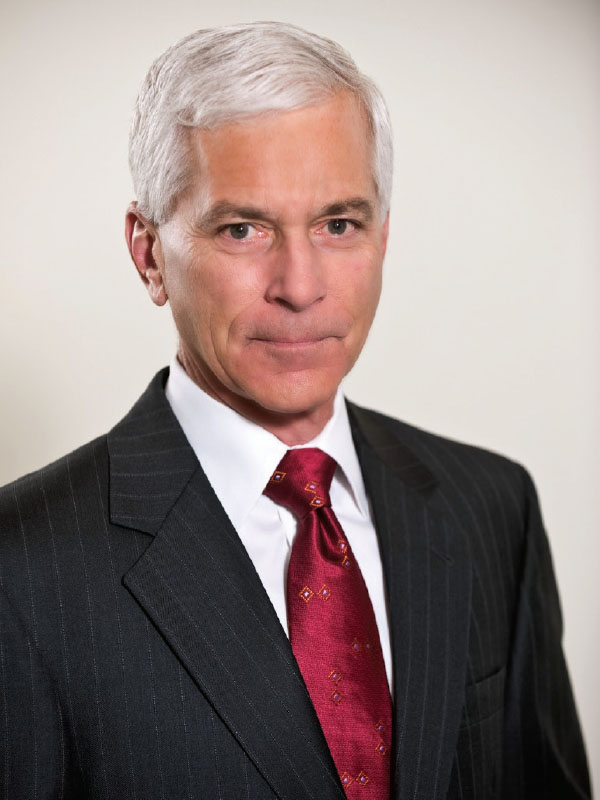
President and CEO of NACUBO
Reading coverage of the soon-to-be resurrected Star Wars franchise brings to mind the volatility, transformation, and oft-described “disruption” of many an industry in recent years. Be it entertainment, performing arts (think La Traviata updated to Rent); travel (personal travel agents to do-it-yourself Orbitz and Trivago); or publications (hard-copy print to e-files for you-name-the device), nearly every profession and product has been touched, retrenched, and sometimes battered and bowed by the powerful whirl of change.
In higher education, such forces have turned the classroom upside down, with online learning gaining momentum and credibility. They have led to revised curricula designed to better conform to regional economic needs.
In nearly every case, we’ve seen the searing critique of the outmoded model and the unsolicited advice (however sketchy or vague) that might lead to an improved product or service, a stronger revenue stream, and satisfied customers.
As I wrote in this column just one year ago, “The economic climate, in particular, is a catalyst to recurring tuition hikes, continuing public pushback on college costs, and soaring student debt and default rates. Taken together, these forces have put in question even the value of a college education itself.”
Vocalizing Value
While we continue to communicate higher education’s value, the reception of the message is mixed, and we realize that very real challenges to our business model surely confront us. Many private institutions can no longer count on tuition revenue to pay all the bills—nor tuition discounts to achieve institution-stabilizing enrollment numbers. Public institutions continue to feel the retreat of state funding, leaving leaders to fend for funding to fill the gap, while serving even more students.
As Bob Shea and Jacalyn Askin write in “Funding Dynamics,” “Existing cost structures, coupled with increasingly constrained public resources to support higher education, have led many to the conclusion that the underlying economic models used by most colleges and universities may not be sustainable in the decades that lie ahead.”
NACUBO’s board of directors has taken this possibility to heart; Shea and Askin are leading the effort to address these challenges. You’ll read in the following pages the details of our Economic Models Project—a multipart initiative, which aims to study in detail the current state of higher education economic models, how they have evolved, and what resources are needed to facilitate a data-driven analysis of an institution’s existing economic model and effective changes to that model. In “Economics in Motion,” several members of the project’s advisory committee share their assessments, and advise on these critical questions.
The subsequent sections of the issue describe change efforts, both small and sweeping, that individual institutions are making—with notable results that may be replicable on other campuses.
Changes Dictate the To-Do List
In “Expanding Academics,” author Karla Hignite points out that, while higher education is all about the students, those very students are always changing, in and of themselves. And college and university programs need to mirror those changes.
Hignite highlights ways that a number of institutions are experimenting with “solutions bold and precise” to ensure that students succeed. When students earn their diplomas or certificates, we all win—in expanding the number of qualified workers to support regional economic development, and in educating student veterans who can combine practical experience with education to qualify for important positions, and to be skilled competitors in the global arena.
As business officers, your role has never been as expansive. You’ve become an integral part of the cabinet, as presidents and senior leaders see “the need for business officers to expand their knowledge base and their understanding of what is happening around them—not only on campus but also throughout the world,” as notes John Lamb, Marquette University’s vice president for finance and treasurer, in “Creating Better C-Suite Partnerships.”
In the same article, author Sandra R. Sabo notes: “Today, every institutional decision is a financial decision. And that means the person who oversees institutional finances must not only be present for, but also participate in, the nitty-gritty discussions that inevitably flow from strategic planning and goal setting.”
At Transylvania University, Lexington, Ky., the cabinet itself has expanded from five to eight members within the past few years. Newcomers represent marketing, information technology, and athletics. “One hundred percent of the university’s budget points to this collection of people,” says Marc Matthews, Marquette’s vice president for finance and business, “so I am always having conversations with everyone about helping them accomplish their goals within their respective budgets.”
And what about the real, hands-on work of accomplishing sustainable change, financial and otherwise? The case studies in the “Progressive Planning” section of the magazine describe initiatives large and small that are, step by laborious step, allowing institutions to maintain their footing in a fast-paced world.
For Hank Huckaby, chancellor of the University System of Georgia, that meant taking on the role of change agent. “At the time I became chancellor in July 2011,” he recalls, “there was also general criticism throughout the country about the cost of higher education. It was within this context that the system assumed the challenge of implementing major changes, and consolidation became one of many efforts we’ve focused on since then.”
With 35 campuses, says Huckaby, “the reality was that, in our service model going forward, we no longer needed that many brick-and-mortar institutions.” While Georgia’s technical college system underwent significant consolidation several years prior and provided a test case of the benefits to be derived, no similar model existed for university system consolidation. The interview with Huckaby provides a status report of the efforts so far.
On a more microcosmic level, efforts to expand online degrees at Millersville University, Millersville, Pa., show promise for both the institution and the local economy. While focused on developing one program for an RN to BSN degree, the university’s experience in developing its distance learning strategy demonstrates a wider reaching value: understanding and maximizing the institution’s internal expertise—and only then outsourcing what others can do better, faster, or more efficiently.
Join the Change Agents
Wherever your college or university is located on the spectrum of change, your influential work as a business officer can be of great value in assessing your institution’s economic model and considering modifications that make for a longer lasting financial foundation. A good place to start is in Nashville, at the NACUBO 2015 Annual Meeting.
This year’s theme, “The Tempo of Change,” couldn’t be more appropriate for communicating the details of the Economic Models Project and facilitating multifaceted discussions about strategies and approaches.
If you are unable to attend in person, or wish to review a few sessions in detail, we’ll once again offer our VIRTUAL: Annual Meeting, which will be available on our website at www.nacubo.org.
Beginning on August 5, you can access several sessions recorded onsite in Nashville. Look for more details by selecting the “Distance Learning” tab on our home page.
As always, we developed our annual meeting offerings and this issue’s articles with your challenges and needs in mind. What is different is the laser focus on financial sustainability—somewhat of a cautionary tale that forms the backbeat of the change tempo.
And speaking of tales, while the model for the Star Wars franchise has changed—a new leader is responsible for implementing the relaunch, and different actors join the cast—the film’s mission and the characters that made the original production work remain the same. It’s this kind of deliberate analysis and planning that NACUBO and higher education leaders are doing to keep up with the whirl of change.
JOHN WALDA, is president and CEO of NACUBO.
SECTION I: ECONOMICS IN MOTION
SECTION II: EXPANDING ACADEMICS
SECTION III: EVOLVING ROLES
SECTION IV: PROGRESSIVE PLANNING



